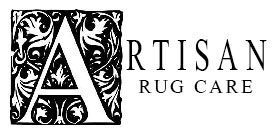How can you tell if your rug is authentic?
How do you know if the Oriental rug you are buying is authentic? We have made a simple guide that will help you tell if you are getting the real deal!
The easiest way to asses the authenticity of a rug is to look at its backside. A rug’s character is revealed in its backside. The rug’s backing will reveal hints about how the rug was made, and may also have a tag with details about the rug’s size, material, production country, and knot count.
An authentic, hand-knotted Oriental rug’s backside should reveal a slightly less saturated but otherwise identical pattern to its front. You should be able to see each individual and unique knots — for example, it should look something like a hand-knitted scarf, with slightly varying sizes and textures of each knot. The knots should not look completely uniform.
If a rug’s backside is too smooth, too perfect, and looks like it was woven by a machine, it’s not an authentic hand-knotted Oriental piece.
An authentic, hand-knotted Oriental rug will also have a fringe. When rugs are knotted by hand, each knot is based on a set of foundation warp threads. These warp threads naturally and necessarily form the rug’s fringe. Thus, the backside of an Oriental rug should show a natural, unbroken transition from the rug’s knots to its fringed warp threads. In contrast, the production style machine-made rugs doesn’t require fringe. Fringe is often sewed onto machine-made rugs as an accent piece but is unnecessary to the production of a machine-made rug. This will be the first red flag.
The second thing that you should look for on an authentic oriental rug, is some sort of tag or sticker that provides additional information about the rug. Not all authentic Oriental rugs have an information tag, but a majority of Orientals sold in America will and these tags provide another assurance of authenticity. Information that you should look for includes country of origin, material used, and type of dye in the material. Most Oriental rugs come from Iran, Pakistan, Afghanistan, and Turkey, but other countries such as a Tibet and India do produce authentic Orientals at a much lower volume. Material of authentic rugs is usually 100% wool, but it is not uncommon to find Oriental rugs that are blended with silk or cotton. Make sure you ask what percentage of each material is used! Finally, authentic Oriental rugs almost exclusively use natural vegetable dye. Any rug that is produced with synthetic or chemical dyes is almost certainly not an authentic Oriental rug.
Lastly you should talk with the retailer about the the piece in question and have them provide any additional information about the rug. Retailers that offer additional information readily and freely usually are selling the real deal. We have found that people who are passionate about selling authentic rugs will often have tons of information about the pieces they are selling and are a willing to share it all with you.
By following this guide, you can be confident in your ability to purchase an authentic Oriental rug. Of course if you have any questions, please contact one of our rug experts at (469) 387-6777 today.
